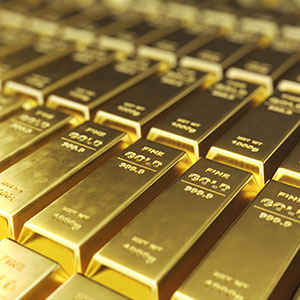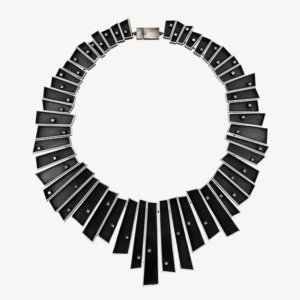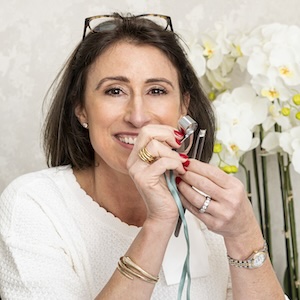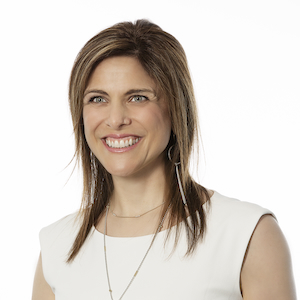
Launched in 2015, Aurate has become one of the industry’s better-known “digitally native” brands.
In December, it opened a store on Madison Avenue in New York City, and it’s followed that up with a store in San Francisco, which opened Friday. Here, cofounders and co-CEOs Bouchra Ezzahraoui and Sophie Kahn talk about how they tried to make their stores different, their future plans, and why they think jewelry has done well during the pandemic.
Are these your first two stores?
Bouchra Ezzahraoui: We started with a pop-up store, when we had no funding, very early on. We always believed that omnichannel—getting to know the customer directly in real life and letting them touch and feel [the jewelry]—was super important. We had our first pop-up ever in 2016, when Sophie and I didn’t even work on Aurate full-time.
In 2018, we ran a few pop-ups in New York City, as well as Boston and Washington, D.C. We also opened two full-time stores in New York that we had to close down because of the pandemic. This is going back to where we were. We ran the stores not only profitably, but they were amazing community hubs for getting to know our customers, getting data about our customers, and also [displaying] the products in real life.
Does anything make these stores unique?
Sophie Kahn: We wanted our stores to be very different from other jewelry stores. Because, as Aurate, we are trying to be different, so the stores should also be different. If you walk by our store, it doesn’t feel like a typical jewelry store that has jewelry in the window. We have big rocks in the window, and a lot of times people thought we were a gallery. You had a lot of Instagrammable moments, people coming in because they thought it was cool.
When you come in, we have three sections that tell the story of the brand. The first section is all about sustainability, giving back to the earth and beyond. It talks about how we are using recycled gold and ethically sourced diamonds.
The midsection [shows] once we have the gold and the diamonds, what do we do with them? We hand-finish them with artisans around the world. There’s black and white pictures of how the pieces are manufactured and designed.
The final section is essentially the customer wearing the jewelry. You see our customer base, which is really diverse, actually wearing the jewelry in different settings. Because it’s jewelry for life. That’s our goal, and that’s what we want to see. The idea is, when a customer comes in, you walk them through that journey [that shows] what Aurate is about.
Do you plan to open in other cities?
Ezzahraoui: That’s very much driven by data. Our No. 1 market is California. Before the pandemic, we planned to open in San Francisco and L.A., and we unfortunately didn’t have the opportunity to do so. But we have always been eyeing [the West Coast].
A lot of D-to-C companies are opening retail stores because of the high cost of digital advertising, and they see them as a form of advertising. Has that been factor for you?
Kahn: Our CAC [customer acquisition costs] on the online side has risen less than our AOV [average order value]. We have become more and more efficient online. As we’ve grown, we’ve become profitable as a company. It’s not that we are doing this because online acquisition costs are so high. It’s more that we have always believed in the power of retail. So, yes, it’s free marketing, it’s extra top line, it’s extra profit.
In the beginning, when we weren’t as big online, stores created credibility. That’s less relevant now that we’ve established ourselves, but, at the end of the day, it’s still free marketing.
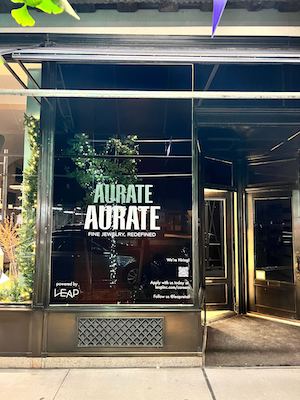
Do you have any kind of target as far as how many stores you’d like to see?
Ezzahraoui: The number is not established. We’re thinking of it in terms of economics but also in terms of where our customer is.
We definitely have other plans to extend and expand the retail presence. We did retail before the pandemic, so we know what it entails and what resources go into it.
Kahn: Even in New York, we had three stores. So we just opened one on Madison Avenue. But we had stores in Williamsburg [Brooklyn] and SoHo, we could easily reopen. [We’re looking at] L.A., Chicago, some areas in Texas.
What’s your average price point?
Ezzahraoui: Our sweet spot is $400–$500.
You are considered a millennial brand. What is the average age of your customers?
Kahn: Bouchra and I are really ambitious when it comes to what we wanted to achieve. We don’t want to be niche and only have one segment. So, yes, there’s the core, which is between 25 and 35, the millennial. But the younger demographic is buying us as well, as well as the older demographic, 45 to 65.
Our Madison Avenue customer is older. Our Williamsburg customer was younger. We have opening price points at $50. We have a colored necklace that completely sold out within 48 hours that was around $100. We have a diamond necklace sold for $5,000. That also sold out within 48 hours. We play on both ends of the spectrum.
How much business do you do?
Kahn: We don’t really share that, unfortunately.
OK. Can you share how many customers you have?
Ezzahraoui: It’s in the hundreds of thousands.
You have received funding in the past. What are your plans for the future? Are you seeking more, or could you see yourself going public?
Ezzahraoui: In 2020, going into the pandemic, we became profitable, which was a huge milestone. And we continue to be so. It’s given us a lot of luxury to think about which route we want to go. We definitely want to grow further. For us, funding is more about being strategic. Who do we think is a good partner?
We definitely will be potentially looking [for] a growth partner that understands the business and can take us to the next step.
You don’t use other designers. What do you think distinguishes Aurate’s jewelry?
Kahn: I design everything, so I have very strong [sense] of who our woman is. It’s this balance between being feminine but also very bold. The edgy classic piece.
That being said, we have two pillars. We have the classics, that are the jeans and T-shirts of jewelry. Those are items everybody wants, and everybody needs, that you’re going to buy and potentially keep and send to the next generation. Then you have your capsules that are more about storytelling. We did a lioness capsule with Kerry Washington, with a whole story about female empowerment. Those are more like storytelling moments where we can be a bit more experimental.
You have said your model is “disruptive.” Why?
Kahn: The first part is price quality. That’s how this whole thing started. Bouchra and I were having brunch as friends from grad school. I had this crazy green finger from an overpriced ring, and Bouchra is from Morocco and she knows the value of gold. That got us the talking about why we can’t afford real gold. Why can we, for a certain budget, only get terrible quality? The start of Aurate was about providing high quality for an affordable price.
Ezzahraoui: For me, it was sparking and starting the conversation about how the market was treating women and seeing them as only a gift receiver, which is not necessarily the case. Women should be empowered to buy for themselves, they should be very educated about what they’re buying for themselves. The same way they’re buying T-shirts, they should be able to buy those hoops, in high quality, and even high price points. They’re making 80% of the purchasing decisions and households in the U.S.
When we started, the conversation about sustainability and ethical sourcing wasn’t something that the market was really looking into. We’ve been hammering that subject since day one. A lot of people jumped on the bandwagon as these things have become more relevant and customers became more vocal. But that wasn’t really the case in like 2016 or 2017.
Kahn: The most important part is putting the customer first. Because we’re D2C, we have a lot of data and we use that to design. Instead of me staring at the sky and deciding what I feel that day, it’s talking to our customer, figuring out what they need. and designing from there.
The jewelry industry had a great year last year. Any reason you see for that?
Ezzahraoui: Our product is timeless. Fine jewelry is emotional, but it’s also an investment in a way. In a world where you have all these inflation fears and people thinking about where they should allocate their money, gold historically has been an inflation hedge.
A lot of people were stuck home for two years and had some disposable income and when you think about it, what is the next emotional thing you want to be doing? Buy something for yourself that means something.
Top: Aurate cofounders and co-CEOs Bouchra Ezzahraoui and Sophie Kahn (photos courtesy of Aurate)
Follow JCK on Instagram: @jckmagazineFollow JCK on Twitter: @jckmagazine
Follow JCK on Facebook: @jckmagazine

